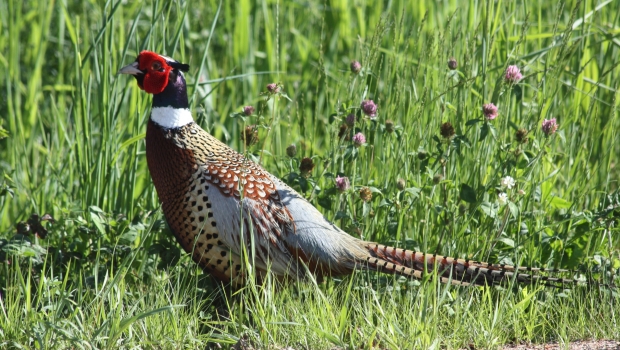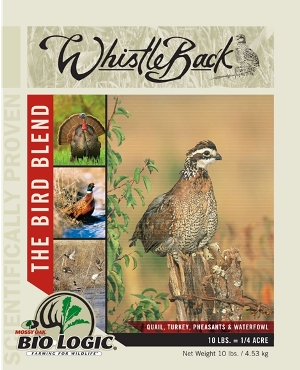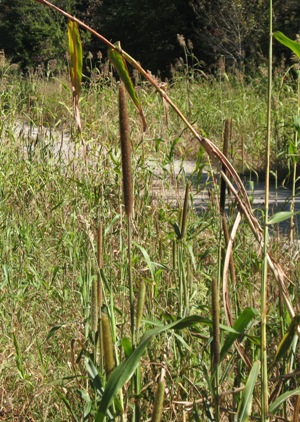
By Austin Delano
We work hard to create products that help to attract and grow whitetails. Although many of our blends benefit a wide variety of God’s critters, the majority of our blends are meant to be planted for deer. But a common question from customers is, “What about the birds?” I am very frequently asked what can be planted for turkeys, quail, doves, ducks, etc. Most often hunters and land managers are looking for ways to keep game birds on their property. They want to attract and hold so the birds don’t have to leave their land to find their necessities. Growing food for birds is relatively easy and a bit less complicated than growing food for whitetails
As an example, let’s take a look at turkeys. Wild turkeys are opportunistic omnivores and take advantage of a wide variety of food sources as they become available. Through the spring and summer there is an abundance of insects, berries, and plants that keep turkeys in a pretty tight home range. As the fall approaches, the insects are fewer, most berries and preferred seeds are gone and turkeys begin to move around and transition to different food sources. While acorns and other hard mast are a great food source for turkeys, they don’t produce heavily every year, and on drought years they can be almost non-existent. Having a food source specifically for your turkeys that will be available at a key time of the year could be the answer to keeping your birds “home” through the winter.
 WhistleBack is a warm season blend of sorghum, three varieties of millets, Egyptian wheat, and sunflowers. This mix is designed to produce massive amounts of seeds and at the same time offers cover for many species of upland birds. WhistleBack contains varieties that all grow and mature at different heights offering food to birds as small as quail and doves on up to pheasants or turkeys. Our modern day food plot planting practices are not very conducive to feeding quail, turkeys, etc; we plant every available open piece of ground for our deer and figure the birds will be fine. It doesn’t take a large area to feed a lot of birds and designating a third or a quarter of an acre out of some of your “deer plot” acreage for a strip or perimeter of WhistleBack will go a long way in feeding your game birds.
WhistleBack is a warm season blend of sorghum, three varieties of millets, Egyptian wheat, and sunflowers. This mix is designed to produce massive amounts of seeds and at the same time offers cover for many species of upland birds. WhistleBack contains varieties that all grow and mature at different heights offering food to birds as small as quail and doves on up to pheasants or turkeys. Our modern day food plot planting practices are not very conducive to feeding quail, turkeys, etc; we plant every available open piece of ground for our deer and figure the birds will be fine. It doesn’t take a large area to feed a lot of birds and designating a third or a quarter of an acre out of some of your “deer plot” acreage for a strip or perimeter of WhistleBack will go a long way in feeding your game birds.
The plant varieties in WhistleBack will mature in 60-90 days and once the seed heads mature and dry up they will begin to naturally drop seeds providing feed for your birds. As the fall turns into winter and birds really start looking for food, the stalks of the blend will weaken with the freezes and thaws allowing seeds to be reached and knocked off by the birds. A ½ acre test plot of this blend that I planted in Alabama kept a flock of turkeys in it from September through February, there wasn’t a day went by that you wouldn’t catch them feeding in it. Some turkeys even learned that later in the winter they could step on some of the smaller stalks and push the seed head toward the ground. This blend also makes a very good bedding area for deer when planted in larger plots and it can also be used for a buffer or a transitional zone between the woods or bedding areas and your other food plots.
 The seeds in WhistleBack are all fairly small and ground preparation should be as follows. No-Till drills work great for this blend, most drills have a setting for planting millet or sorghums. If using traditional planting methods, I would suggest spraying the area to be planted a week to ten days ahead of planting with a non-selective herbicide, such as Round-Up, to kill all existing vegetation. Ground to be planted can then be disked or tilled and then cultipacked or rolled to create a firm seed bed. WhistleBack can then be broadcasted and lightly dragged in, or broadcasted just prior to a rain event and let the rain properly bury the seed.
The seeds in WhistleBack are all fairly small and ground preparation should be as follows. No-Till drills work great for this blend, most drills have a setting for planting millet or sorghums. If using traditional planting methods, I would suggest spraying the area to be planted a week to ten days ahead of planting with a non-selective herbicide, such as Round-Up, to kill all existing vegetation. Ground to be planted can then be disked or tilled and then cultipacked or rolled to create a firm seed bed. WhistleBack can then be broadcasted and lightly dragged in, or broadcasted just prior to a rain event and let the rain properly bury the seed.
WhistleBack will work for quail in Alabama, doves in Texas, pheasants in Iowa and turkeys in New York. In Minnesota, Editor in Chief Todd Amenrud, uses both, Guide’s Choice (a blend we market mainly for waterfowl) and WhistleBack. Todd says, “Back when I was a boy (late 70s early 80s) we had tons of pheasants around and then they just disappeared - obviously because of habitat loss. But we never even dreamed of having wild turkeys around. Now we have huntable populations of both. It’s amazing how well even small areas of these plantings can benefit your property…for all the animals, not just pheasants and turkey.”
A pH of 6.5-7.0 is needed for optimum growth and seed production; however, millets, sorghums, and sunflowers are fairly tolerant of acidic soils, allowing you to plant for your birds in areas with less than ideal soil conditions. WhistleBack can use about 300 lbs of 13-13-13 per acre, or an equivalent. All the seed varieties in this blend are nitrogen lovers and it would benefit growth and seed production to implement a secondary nitrogen application 4-6 weeks after germination, much like you would corn. Do your part this year and designate some ground for feeding birds. You might just keep that wandering covey of quail or flock of pheasants on your property where they will nest, raise their young. Then you may get to hear a few pheasants cackle or quail “whistle back” in return.



























